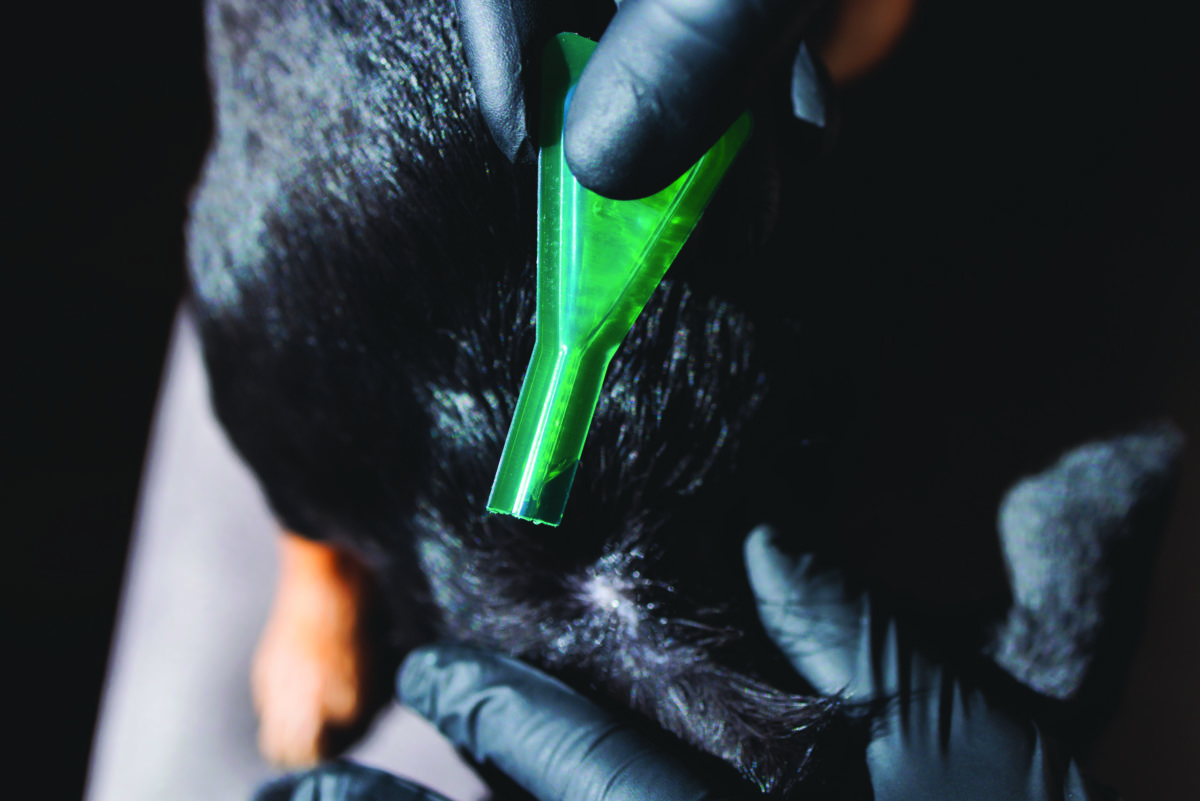1 Apr 2024
Vets must strike a balance between achieving adequate parasite control for their patients and using parasiticides in a sustainable way. This can only be achieved with a risk-based approach to their use and by giving careful consideration to choosing the right product for the job…

Image © Olga / Adobe Stock
UK cats and dogs are exposed to a wide range of parasites, such as fleas, Toxocara species, Echinococcus granulosus, Angiostrongylus vasorum and tick-borne pathogens, which may cause significant disease in pets or present zoonotic risks to owners. Parasite prevention is therefore essential to reduce these disease risks and to avoid erosion of the human-animal bond.
Concerns, however, regarding the impact of parasiticide use on environmental contamination and drug resistance have been raised in recent years.
Limiting parasitic disease and zoonotic risk relies on a combination of practical control measures and preventive drug treatments. Parasite control programmes for individual pets should allow bespoke advice to be formulated based on regional risk and lifestyle of the pet. Asking questions surrounding lifestyle and owner preferences is important to ensure treatment is effective, but also to limit any risk of potential environmental contamination or drug resistance through underdosing, misapplication or wash off from product.
Some parasites with disease and zoonotic potential are ubiquitous, and exposure is practically impossible to avoid. For UK cats and dogs this is true of Toxocara and cat fleas. For this reason and the zoonotic risk they represent, regular treatment for Toxocara and fleas is essential, and should form the basis of cat and dog parasite control programmes. Other parasite prevention is risk assessed based on lifestyle and geographical distribution.
Parasites to consider in the UK would include ticks (Ixodes species, Dermacentor reticulatus), tapeworm (Dipylidium caninum, Taenia species, E granulosus) and lungworm (A vasorum).
Any recommendation needs to be clear and the reasons behind it explained, and consistency of message across the practice is vital if the owner is to trust a recommendation and not become confused by conflicting advice.
A number of steps can be taken to reduce the impact on pet health caused by worms and minimise zoonotic risk. Treatment of adult cats with outdoor access and dogs with a licensed anthelmintic should take place at least every three months to reduce Toxocara egg shedding (Nijsse et al, 2015; Wright and Wolfe, 2007).
Monthly treatment to eliminate most egg shedding is recommended for:
Cat fleas are a cause of human irritation and revulsion, flea allergic dermatitis in susceptible pets and vectors for a variety of infections.
Bartonellosis is of particular concern as a common zoonosis, which is spread through flea faeces. Central heating allows environmental stages of the flea life cycle to persist all year round in UK homes and any break in flea treatment on any pets in a household will allow flea infestation to establish or continue.
All UK cats and dogs should, therefore, be treated for fleas frequently enough to prevent egg production and household infestation establishing.
In contrast, UK ticks do not typically infest homes and seasonal peaks of tick activity occur in the UK during the spring, summer and autumn. However, evidence exists that questing and feeding occurs throughout the year (Wright et al, 2018). Ticks on UK cats and dogs can carry a range of pathogens, including Borrelia and Babesia species (Abdullah et al, 2018; Davies et al, 2017). Tick prevention is, therefore, vital in dogs and cats at high risk of exposure.

For flea elimination programmes to be successful, adult fleas must be killed on the pet before they can produce eggs. While use of growth regulators and environmental insecticides are useful at reducing larvae and eggs, they will have minimum effect on pupae in the environment and so effective, rapid killing of adults is required to completely break the reproductive cycle.
The basis of flea control is:
Year-round prevention for all cats and dogs is essential to prevent infestations establishing and disease transmission taking place. Even pets with no outdoor access may be exposed to fleas through introduction from visiting pets, stray cats or wildlife. People may also trigger outdoor flea pupae to emerge and then mechanically transfer the newly emerged adult fleas inside the home.
No preventive treatments for ticks are 100% effective, but the use of a licensed drug that rapidly kills ticks such as an isoxazoline or pyrethroid repellents will greatly reduce disease transmission.
Preventive treatment for ticks is, therefore, important in dogs walking in tall grass, rough pasture or areas where deer and ruminants have access; cats with prolonged and regular outdoor access; and cats and dogs with a history of tick attachment.
Because no tick preventive product is 100% effective, it is also important to check pets after outdoor activity and remove any ticks found with a tick removal device.
A wide range of products are available to treat fleas, ticks, and worms in cats and dogs. Product selection for parasite control should be discussed with the owner to assess lifestyle and maximise efficacy and compliance.
Questions to ask and discussions to have with the client include:
Concerns regarding over-treatment, the development of anthelmintic resistance, and environmental contamination have led to the question of whether regular testing of pets could replace routine preventive treatment for roundworms in these cats and dogs.
This is a viable option, but would need to be performed at least quarterly to avoid prolonged human exposure to zoonotic life stages and harm to pets through prolonged exposure to pathogenic nematodes such as A vasorum.
Routine testing for endoparasites, however, is of benefit to practices both in terms of reinforcing good practice among pet owners, identifying which parasites are present in a local area and early detection of drug resistance. It can be performed at annual or six-monthly health checks and in the case of A vasorum, before surgery.
Testing has become much more convenient and affordable in recent years with the launch of faecal parasite testing packages and aids.
Parasite control remains as important as ever in cats and dogs.
Flea, tick and worm preventive products form a vital part of this control, and time should be taken with clients to assess parasite risk, personal preferences and compliance issues.
In doing so, an effective regime using a suitable product for the individual can be established. As well as maximising compliance and efficacy, it will also help to manage potential environmental contamination and over-treatment.